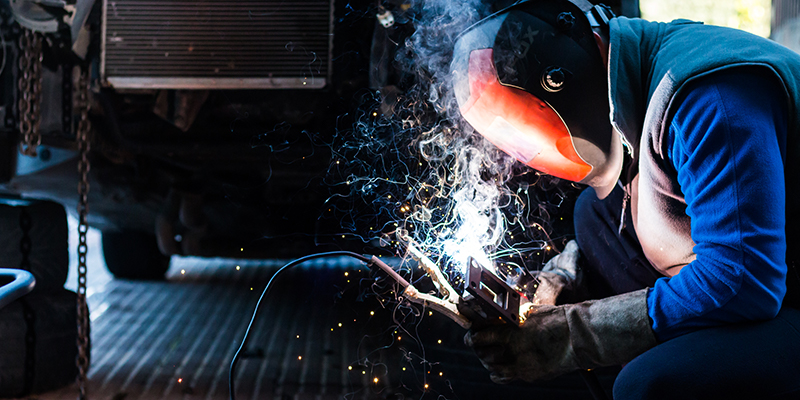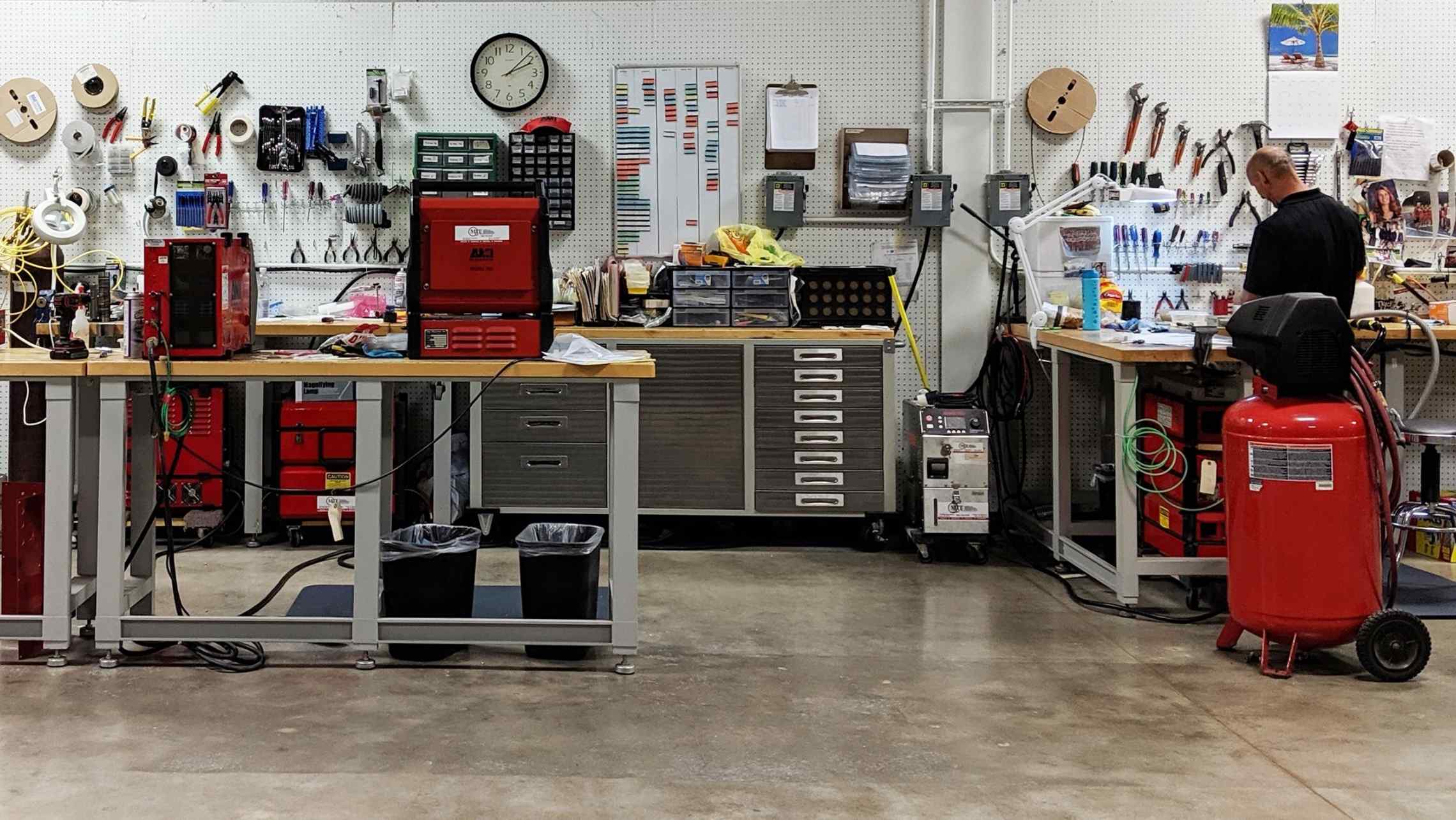Everything about Welding: Key Insights Into Techniques and Best Practices for Success
Welding encompasses a range of methods, each suited for certain materials and applications. Understanding these techniques, such as GMAW, SMAW, and TIG, is crucial for accomplishing excellent outcomes. The best equipment and safety and security practices can not be forgotten. As prep work and troubleshooting play critical functions in the welding process, understanding these elements can significantly boost the quality of the final product. What are the crucial elements that assure an effective weld?
Recognizing Different Welding Methods
Welding strategies encompass a range of approaches, each fit to certain applications and materials. Among the most usual methods are Gas Metal Arc Welding (GMAW), Shielded Steel Arc Welding (SMAW), and Tungsten Inert Gas Welding (TIG) GMAW, likewise understood as MIG welding, is preferred for its rate and versatility, making it suitable for thin materials. SMAW, or stick welding, is favored for its simpleness and effectiveness in exterior environments, particularly with thicker metals. TIG welding provides accuracy and control, making it ideal for detailed work and non-ferrous steels (Fabrication). Each method has its one-of-a-kind advantages and considerations, enabling welders to select the finest technique based upon the project's needs, material type, and desired outcomes. Recognizing these strategies is vital for effective welding
Essential Welding Devices and Devices
While various welding strategies call for certain abilities, the ideal tools and devices are just as essential for achieving high quality results. Crucial welding devices consists of welding devices, which differ relying on the strategy-- such as MIG, TIG, or stick welding. Protective gear, including gloves, helmets, and aprons, assurances security and convenience throughout the process. On top of that, components and clamps help safeguard products in location, making certain precision in welds. Consumables like welding poles, wire, and shielding gas are likewise vital components that influence the quality of the weld. Devices such as cutters and grinders promote surface area prep work and post-weld completing, contributing to an expert result. Buying high-grade tools eventually enhances the efficiency and performance of welding projects.
Security Practices in Welding
Correct security methods are necessary in the welding market to protect employees from potential hazards. Welders have to wear ideal personal safety tools (PPE), including safety helmets with appropriate shading, gloves, and flame-resistant garments. Ample ventilation is vital to minimize direct exposure to dangerous fumes and gases produced throughout the welding process. In addition, employees must be educated in the right handling of welding tools to avoid crashes. Fire safety and security steps, such as maintaining flammable materials far from the welding location and having fire extinguishers readily offered, are required. Routine assessments of tools and work spaces can help determine prospective hazards prior to they lead to accidents. By adhering to these security practices, welders can develop a much safer working environment and reduce threats related to their trade.
Readying Products for Welding
Preparing materials for welding is a crucial action that substantially affects the quality and stability of the final product (Montana Mobile Welding and Repair Welding). Proper preparation entails cleaning up the surface areas to eliminate pollutants such as dust, oil, and corrosion, which can endanger the weld. Methods such as grinding, fining sand, or using solvents are typically utilized to attain a clean surface. Additionally, guaranteeing that the materials fit with each other well is vital; spaces can cause weak welds. It's additionally essential to consider the alignment and positioning of the parts, as this will certainly impact the simplicity of welding and the final outcome. Finally, selecting the ideal filler material and making certain compatibility with the base steels is essential for accomplishing solid, sturdy welds
Tips for Getting High-Quality Welds
Achieving premium welds needs attention to information and adherence to ideal practices throughout the welding process. Appropriate joint preparation is important, guaranteeing surfaces are clean and cost-free from contaminants. Choosing the appropriate filler product and welding method based on the base steels is crucial for excellent bonding. Preserving constant traveling rate and angle while welding can prevent issues and promote uniformity. Furthermore, regulating heat input is essential; excessive heat can result in bending and damaged joints. If required, consistently inspecting the welds during the procedure permits for prompt changes. Employing ideal post-weld therapies, such as cleansing and anxiety alleviation, can boost the toughness and integrity of the weld, ultimately ensuring a successful result.
Fixing Common Welding Issues
Welding typically provides obstacles that can influence the high quality and stability of the last product. Common concerns such as porosity, inconsistent weld grains, and overheating can occur, each calling for certain troubleshooting techniques. Understanding these troubles is necessary for welders to improve their skills and accomplish perfect outcomes.
Porosity Issues Discussed
Porosity can usually be overlooked, it remains an essential concern in welding that can jeopardize the integrity of an ended up item. Porosity describes the visibility of small gas pockets within the weld bead, which can damage the joint and lead to early failure. This trouble typically occurs from pollutants, dampness, or inappropriate protecting gas insurance coverage during the welding procedure. To minimize porosity, welders must verify that the base products are dry and tidy, use appropriate protecting gases, and maintain constant welding criteria. Frequently checking the equipment and atmosphere can likewise aid recognize potential concerns before they manifest in the weld. Attending to porosity effectively is important for accomplishing solid, durable welds that meet top quality criteria.

Irregular Weld Beads
Inconsistent weld grains can greatly influence the top quality and stamina of an ended up product. Various aspects contribute to this concern, consisting of incorrect traveling speed, incorrect amperage setups, and irregular electrode angles. When the welder moves as well rapidly, a grain may appear narrow and do not have penetration, while relocating too slowly can create extreme build-up. In addition, using the incorrect amperage can lead to either damaging or excessive spatter, both of which compromise weld stability. The welder's method, such as irregular torch motion, can additionally lead to unequal grain appearance. To mitigate these problems, welders ought to concentrate on keeping stable, regulated movements and making certain correct tools setups to accomplish harmony in their welds. Uniformity is crucial to attaining reliable and strong welds.
Overheating and Warping Issues
Excessive warmth throughout the welding procedure can bring about substantial overheating and buckling issues, impacting the structural integrity of the work surface. These troubles often manifest as distortion, which can endanger positioning and fit-up, making additional assembly testing. Elements adding to overheating include the selection of welding criteria, such as voltage and take a trip speed, as well as the kind of product being bonded. To reduce these concerns, welders must keep constant traveling rate and ideal heat input while keeping an find out here now eye on the work surface temperature level. Additionally, preheating or post-weld heat therapy can help minimize stress and anxieties triggered by quick cooling - Belgrade Welding. Normal evaluation and adherence to ideal methods are essential in protecting against getting too hot and making sure the longevity and dependability of welded frameworks
Frequently Asked Concerns
What Are the Occupation Opportunities in the Welding Market?
The welding market offers varied profession possibilities, including positions as welders, examiners, educators, and designers. Specialists can function in manufacturing, building, aerospace, and automobile industries, gaining from strong need and affordable salaries in different duties.
How Can I Enhance My Welding Speed Without Giving Up High Quality?
To improve welding rate without sacrificing high quality, one should exercise effective techniques, preserve tools, maximize setups, and enhance hand-eye sychronisation. Routine training and looking for responses can also substantially add to accomplishing quicker, premium welds.
What Qualifications Are Offered for Welders?
Countless certifications exist for welders, including those from the American Welding Culture (AWS), the National Center for Building And Construction Education and Research (NCCER), and various industry-specific companies. These credentials improve employability and show skill proficiency.
How Does Welding Affect the Characteristics of Metals?
Welding influences the homes of steels by altering their microstructure, which can lead to adjustments in hardness, ductility, and toughness. Warmth input and cooling prices throughout the process greatly influence these material qualities.
Can I Weld Dissimilar Metals With Each Other?
